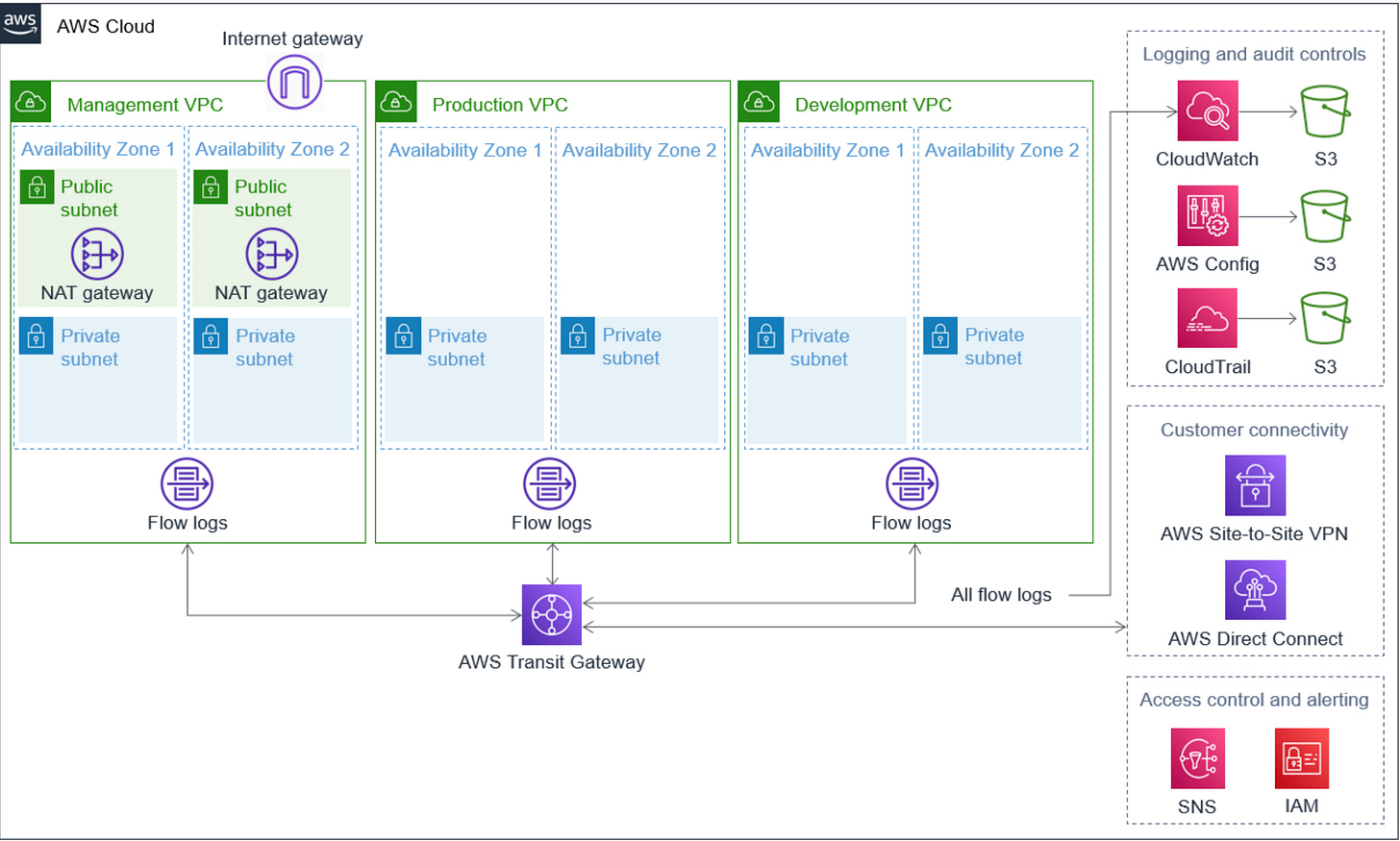Introduction
In the ever-evolving landscape of healthcare technology, the fusion of Cloud-Native architecture with Artificial Intelligence (AI) and Large Language Models (LLM) is redefining patient care. As organizations harness the power of cloud platforms, such as AWS, to develop sophisticated AI/LLM solutions, ensuring compliance with the Health Insurance Portability and Accountability Act (HIPAA) becomes paramount. This comprehensive exploration dives into the intricacies of designing HIPAA-compliant Cloud-Native AI/LLM services on AWS, with each technical facet tailored to the unique challenges of healthcare AI.
LLM Inference Design Considerations
In the realm of designing HIPAA-compliant Cloud-Native AI/LLM services on AWS, the choice of Large Language Models (LLM) is a crucial consideration. Organizations often opt for well-established LLM frameworks like OpenAI's GPT-3 or BERT for their natural language processing capabilities in healthcare applications. The careful selection of an LLM depends on the specific requirements of the AI/LLM service, such as the complexity of language understanding, context retention, and data leak prevention. Moreover, privacy concerns in healthcare underscore the importance of leveraging private LLM inferences. AWS facilitates this by offering services like Amazon SageMaker for deploying models within a Virtual Private Cloud (VPC), ensuring that LLM inferences are performed in a secure and isolated environment. This approach aligns with HIPAA compliance, as it adds an additional layer of protection to patient data processed through language models, assuring confidentiality and meeting the stringent privacy requirements of healthcare regulations.
Image Credit: AWS HIPAA Reference Architecture
Foundational Security: Integrating Security by Design into AI/LLM
The foundation of a Cloud-Native AI/LLM service lies in the principle of Security by Design. AWS Identity and Access Management (IAM) plays a pivotal role in managing access to AI/LLM models and datasets. Encryption, facilitated by AWS Key Management Service (KMS), is strategically embedded into the architecture, securing both at-rest and in-transit data. This design ensures that sensitive patient information processed by AI/LLM algorithms is shielded, aligning seamlessly with HIPAA's stringent security requirements.
Decoupled Architecture: Enhancing Scalability and Privacy in AI/LLM
AI/LLM services should adopt a decoupled architecture, leveraging AWS-native Kubernetes service and microservices. This design not only enhances the scalability of AI/LLM models but also aligns with the privacy requirements stipulated by HIPAA. Each microservice operates independently, allowing for isolated updates and reducing the potential attack surface which are critical considerations when dealing with sensitive patient data.
Data Encryption: Safeguarding Patient Data in AI/LLM Processing
In the context of AI/LLM services, data encryption is a critical component in maintaining HIPAA compliance. Utilizing AWS KMS, our Cloud-Native AI/LLM service ensures that patient data is encrypted before, during, and after processing. This robust encryption strategy not only adheres to HIPAA standards but also fortifies the AI/LLM service against potential security threats.
Access Controls and Identity Management: Ensuring Authorized Usage
AI/LLM services often involve multiple stakeholders accessing and interacting with models and datasets. AWS IAM, in this scenario, plays a pivotal role in defining granular access controls. By adhering to the principle of least privilege, access to AI/LLM resources is restricted, ensuring that only authorized personnel can utilize and modify the models. This aligns seamlessly with HIPAA's access control mandates, crucial in safeguarding patient data processed by AI/LLM algorithms.
Audit Trails : Tracking AI/LLM Model Interactions for Compliance
HIPAA compliance demands detailed audit trails, a requirement met by AWS CloudTrail in a Cloud-Native AI/LLM service. Every interaction with AI/LLM models, including data inputs and outputs can be meticulously logged. These logs not only satisfy regulatory compliance but also provide a comprehensive view of how AI/LLM models are utilized, aiding in both auditing and improving the overall AI/LLM service.
Secure APIs: Enabling Interoperability in AI/LLM Solutions
Interoperability is a key consideration in healthcare AI/LLM solutions. Secure APIs, facilitated by AWS API Gateway and following the OAuth standard, enable seamless integration with other healthcare systems while adhering to HIPAA's encryption and access control requirements. This ensures that data exchanged between AI/LLM services and external systems complies with privacy and security standards.
Disaster Recovery and Data Resilience: Ensuring Continuity in AI/LLM Operations
For AI/LLM services, data resilience and disaster recovery are paramount. AWS-native services like Amazon S3 for data storage and Amazon Aurora for databases contribute to the robustness of our Cloud-Native AI/LLM service. Automated backup mechanisms and geo-redundancy ensure that patient data remains accessible, even in the face of unforeseen disruptions, aligning with HIPAA's requirements for data availability and integrity.
Compliance as Code: Automating Governance and Compliance in AI/LLM
In the world of AI/LLM, automation becomes a powerful ally. Compliance as Code principles, implemented through AWS CloudFormation, define and deploy the entire infrastructure of our Cloud-Native AI/LLM service. AWS Config continuously monitors compliance, automatically remediating any deviations. This approach not only streamlines the governance of AI/LLM systems but also ensures ongoing HIPAA compliance.
Ongoing Compliance Monitoring : Adapting to Evolving AI/LLM Regulations
AI/LLM systems are subject to evolving regulatory landscapes. Regular vulnerability scans, facilitated by AWS-native services like Amazon Inspector, ensure that the AI/LLM service remains resilient to emerging threats. Continuous compliance monitoring, with tools like AWS Security Hub, empowers the AI/LLM service to adapt proactively to evolving HIPAA regulations.
Conclusion: Navigating the Future of Healthcare with AI/LLM Designs
In conclusion, the design of HIPAA-compliant Cloud-Native AI/LLM services on AWS exemplifies the delicate balance between innovation and regulatory adherence. By intertwining the capabilities of AWS cloud infrastructure with the intricacies of AI and LLM, healthcare organizations can pioneer the future of patient-centric, data-driven care. This approach not only meets current HIPAA standards but also positions healthcare AI/LLM systems to navigate the evolving landscape of regulatory requirements, ensuring a future where cutting-edge technology aligns seamlessly with the principles of privacy, security, and patient well-being. The amalgamation of AWS's robust cloud services with AI/LLM solutions sets the stage for a healthcare revolution where innovation and compliance coexist harmoniously.
References:
US Department of Health and Human Services: https://www.hhs.gov/hipaa/index.html
Architecting for HIPAA Security and Compliance on Amazon Web Services: https://docs.aws.amazon.com/whitepapers/latest/architecting-hipaa-security-and-compliance-on-aws/architecting-hipaa-security-and-compliance-on-aws.html
HIPAA Reference Architecture on AWS: https://aws.amazon.com/solutions/implementations/compliance-hipaa/
Health Insurance Portability and Accountability Act (HIPAA) Security Rule 2003: https://docs.aws.amazon.com/audit-manager/latest/userguide/HIPAA.html






